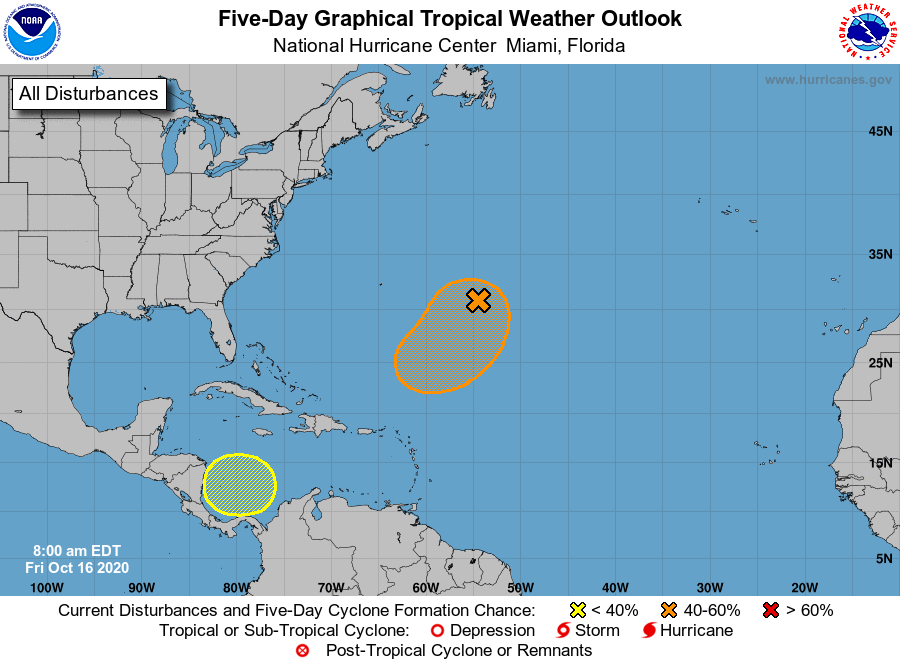MIAMI — The National Hurricane Center is monitoring a new system in the mid Atlantic this morning with increased odds of development while anticipating a second system to appear in the southwestern Caribbean.
The first, a broad non-tropical low pressure system, has better organization this morning and is located about 600 miles east-southeast of Bermuda, according to the NHC’s 8 a.m. update.
People in the U.S. Virgin Islands and Puerto Rico have to keep one eye on these systems. The two tropical waves have been tracked by meteorologists since last evening.
One is in the west-central Caribbean Sea and has a good chance of strengthening into a tropical depression this weekend.
The system has a 20 percent chance of developing into the next tropical depression or tropical storm in the next two days and a 40 percent chance of doing so in the next five.
It is forecast to move over warm water creating favorable conditions for development, but it is likely to encounter wind shear by midweek, AccuWeather hurricane expert Dan Kottlowski said.
A second broad area of low pressure is predicted to emerge early next week in the southwestern Caribbean Sea. There is an expectation of some development as the system will be nearly stationary.
Forecasters give the system a 30 percent chance of developing into a tropical depression or storm in the next five days.
Its path is uncertain, but “there is a chance it could affect Cuba, the Bahamas and perhaps the Florida Peninsula either directly or indirectly during the fourth week of October,” Kottlowski said.
Whichever system, if either, develops into a tropical storm, would be the 26th named storm of the year and given the Greek letter Epsilon as its name.
The official last day of hurricane season is November 30.
Because 2020 is a La Niña year, forecasters expect late-season storm activity to increase in October and possibly even carry into November.
The busy 2020 hurricane season is rivaling the 2005 season, which had a record 27 named storms.
Remarkably, none of the storms that have made landfall in the continental U.S. this year have hit Florida. October storms often threaten Florida as they move north and then northeastward.
https://forecast.predictwind.com/atlas/#Wind

